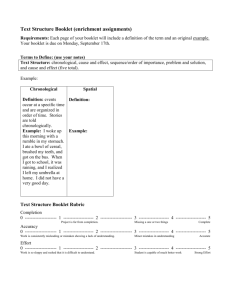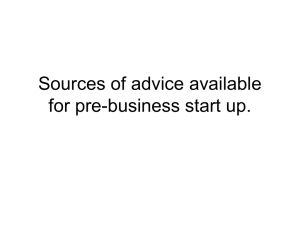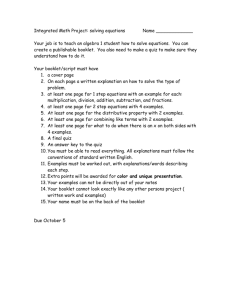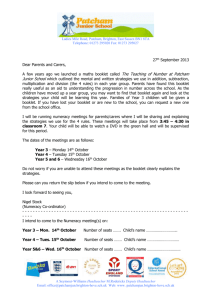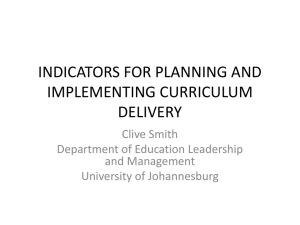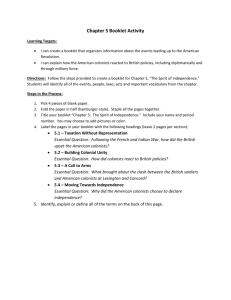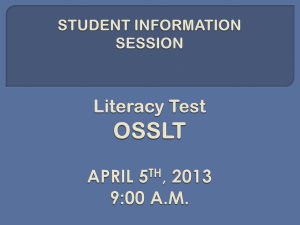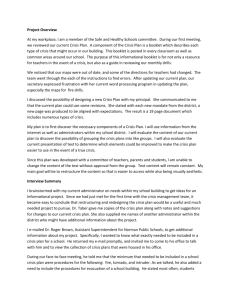PS What Next after session 1 work booklet
advertisement
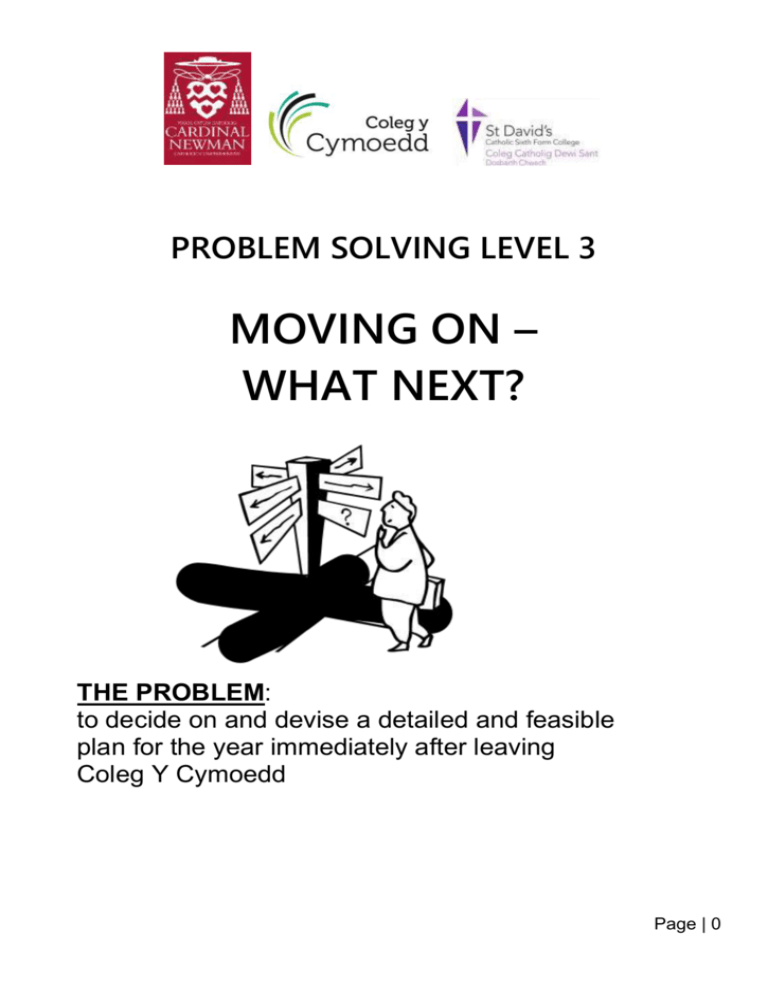
PROBLEM SOLVING LEVEL 3 MOVING ON – WHAT NEXT? THE PROBLEM: to decide on and devise a detailed and feasible plan for the year immediately after leaving Coleg Y Cymoedd Page | 0 SESSION 3 Step 1: You should have identified 3 or 4 methods of solving your problem. In your Candidate Work Booklet write about each method, detailing what activities you will do for each of these to help you choose between them. The activities you discuss for each method should not be based on the same basic approach. They should include a variety eg visual , auditory and spoken, written, analytical. Make some notes below to help you to organise your thoughts and then complete the relevant section in the Candidate Work Booklet: Method 1: What activities will you use to investigate this method? Page | 1 Method 2: What activities will you use to investigate this method? Method 3: What activities will you use to investigate this method? Problem Solving, Candidate Work Booklet: Complete Q4 [3.1.2] Page | 2 Step 1b: Now you need to make notes on how you came up with each method. You might want to think about the following: (1) How did you come up with each method? (2) Is the method based on: o written work? o practical experiment? o study? o imitiation? (ie doing it because someone you know has) There might be elements of all of the above in each method- you will need to describe what you are going to do for each method. (3) Why is your approach appropriate for the method? Again, you might want to make notes here, to help you to clarify your thoughts, before completing question 5 in your Candidate Work Booklet. Page | 3 Problem Solving, Candidate Work Booklet: Complete Q5 [3.1.2] Page | 4 Step 1c: It is time to consider the main features and risks of each method- you can discuss with others. METHOD 1: _______________________________ Main features Risks METHOD 2: ___________________________ Main features Risks METHOD 3: ______________________________ Main features Risks Problem Solving, Candidate Work Booklet: Complete Q6 [3.1.3] Page | 5 Step 1d: Now you must do some basic research (based on what you’ve said above) to be able to choose which method you will follow. You might wish to: Talk to other people about each method. Look for jobs in the newspapers / job centre. Look up the cost of a gap year. Look on UCAS website. You should use some of the activities you talked about earlier. You must keep evidence of what you do: Keep a record of any discussion you have. Make photocopies or keep the newspapers you look at. Print the websites you use Page | 6 Step 1e: Now you need to decide which method you will adopt and why. You need to give detailed reasons as to why you have chosen this method. Refer to the research you have done. Focus on the method you have chosen but refer to the others as well. Explain why you have decided to focus on your chosen methodwhat benefits does it have for you? Problem Solving, Candidate Work Booklet: Complete Q7 [3.1.3] Page | 7 SESSIONS 4 and 5: Monitoring- action planning and research. Now that you have chosen which method to follow, you need to devise an Action Plan. It needs to have a detailed timeline with deadlines for the essential activities you will need to carry out in order to solve your problem. You need to have your Action Plan approved by your tutor. In order to create your Action Plan: Make notes below of the essential activities you will need to do. Place them in order with dates. BE DETAILED! You could look at the research booklet for your selected option in order to help you decide which activities you will need to do. Problem Solving, Candidate Work Booklet: Complete Q8 [3.2.1] Page | 8 NOW WORK THROUGH THE RESEARCH BOOKLET RELEVANT TO YOUR CHOSEN METHOD. You will need to have completed this booklet by the first full lesson back after Easter. Ask your tutor / carers / colleagues to check your progress at appropriate times. REMEMBER: When you have completed the Research Booklet, you will need to come back and finish this booklet and the Candidate Work Booklet. Page | 9 YEAR 13: SESSION 6: Monitoring: recording what has been done. Problem Solving, Candidate Work Booklet: Complete Q9 Activity Log [3.2.2] Q10 Progress Check [3.2.3] SESSION 7: Reviewing the outcomes. (1 hour) Problem Solving, Candidate Work Booklet: Complete Q10 Check if the problem has been solved [3.3.1] Q11 [3.3.2] and Q12 [3.3.3] REVIEW WITH TUTOR: Now that you have completed your Problem Solving Level 3, your tutor may ask you the following question (they may record your answer). “With regard to planning, doing and reviewing, what have you learned about problem solving?” Page | 10
